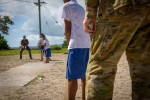Search
Using the filters to the left, click your selection, it will become bold and filter the results, click it again to remove that filter.
Sound Military Conclusions for the Modern Era Editor : Benjamin Armstrong Naval Institute Press , Annapolis, 2013. 179 pp Reviewed By : Jennifer Parker Benjamin F. Armstrong’s 21 st Century Mahan revisits the works of Rear-Admiral Alfred Thayer Mahan, an influential American maritime strategist whose ideas shaped maritime thinking in the late 19th and early 20th centuries – and arguably the 21st. Mahan is best known for the often quoted, yet impenetrably written ‘The Influence of Sea Power Upon …

Australian policymakers have long recognised that the resilience of Southeast Asia, as a region bordering the nation’s northern approaches, is fundamental to Australia’s national security. Australian Army Occasional Paper 17 examines how the Australian defence community, with its extensive array of networks in Southeast Asia, can best engage the region in the years ahead. … Occasional Paper 17 released - Southeast Asia’s Security …
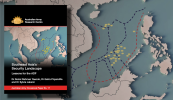
What can the benefits of Train, Advise and Assist missions be for members of Army and the ADF? Train, Advise and Assist (TAA) missions have been a major component of Australian Defence Force (ADF) and Army operations since the end of the Second World War. Defence undertakes these missions, as directed by government and its ministers, to aid, train and develop the forces of Australia’s partner nations. Although these partner forces are the focus of training, it is wrong to characterise these TAA missions as …

War in the Pacific Islands, 1942-1944 By Ian, W. Toll WW Norton and Company, 2015. 688. Paperback ISBN: 9780393353204 Hardcover ISBN: 9780393080643 Reviewed by Sam Baumgarten The Conquering Tide is an outstanding book for those wishing to understand the American conduct of war in the Pacific. It examines the war in the Pacific islands from the aftermath of the Battle of Midway to the Battles of Saipan and Guam in mid-1944. This is the second part of a trilogy. The other two books cover firstly the war in …

In the public mind, there is an inherent connection between deterrence and lethality. In the Cold War, nuclear weapons were the foundation of how the great powers deterred. So too today, much of the deterrence debate has centred on long-range strike options. Yet firepower is not everything. In 1982, the British Government sent three of its nuclear submarines south to warn Argentina against threatening the Falkland Islands. Those submarines were far more capable than anything the Argentineans possessed, yet …

In recent years, Australia’s security force assistance has primarily focused on states that are categorised as fragile or engaged in conflicts. However, expanding the policy toolkit of the Australian Defence Force (ADF) to encompass developed and advanced states could present new opportunities for achieving national government objectives, as well as benefiting the ADF and the Australian Army. Several of Australia’s partner nations, such as the United Arab Emirates, fall under the category of developed and …
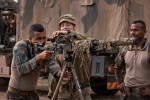
While Australian policy guidance has recently embraced deterrence as a strategic posture, there is limited guidance about the force structure and posture implications for Army. The Australian Army Research Centre's new Occasional Paper addresses this gap by developing three models to achieve strategic deterrence through the forward presence of land forces. … Forward Presence for …
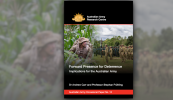
As National Defence: Defence Strategic Review 2023 (DSR 23) is implemented, the Australian Army may continue its, historically validated, ad hoc and bespoke, pathway to train, advise and assist (TAA) missions. An alternate pathway, however, assesses that the urgency of DSR 23 - emphasising ‘assistance [as] a key pillar of [Australia’s] broader bilateral relationships in the region’ - no longer sanctions traditional ad hoc approaches to TAA missions. This Land Power Forum post argues for a standing …
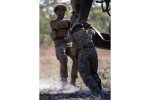
Introduction Train, advise and assist missions play a pivotal role in the Indo-Pacific region, where fostering stability and security is of utmost importance. These missions involve the Australian Army working closely with partner nations to build their military capabilities, enhance their operational effectiveness, and promote regional cooperation. By leveraging these missions within a deterrence framework, the Australian Army both contributes to regional stability and also reinforces the message that any …
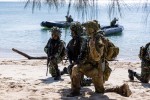
Army’s Role in Train, Advise and Assist Missions 前事不忘,后事之师 “Do not forget the past, for it serves as a teacher for the future” Chinese proverb The actions of Australian commandos in Japanese-occupied East Timor during World War 2 are well established in the Australian Army legacy. Less widely known, however, is the fact that Australia, not Japan, was first to invade East Timor in December 1941. The deployment of a joint Australian and Dutch force into Portuguese Timor, 10 days after the Japanese attack on …
